St. Anthony’s Shrine Kochchikade, Colombo, Sri Lanka is a sacred Roman Catholic church in the Archdiocese of Colombo, Sri Lanka. Located in a bustling area of Colombo, Kochchikade, this miraculous shrine dates back to the 18th century and is dedicated to St. Anthony of Padua, the patron saint of sailors, fishermen, travelers, the elderly, the oppressed, pregnant women, harvests, horses, and swineherds, but most importantly, seekers of things lost. This church is also known as Kochchikade Palliya.
St. Anthony’s Church Kochikade, Colombo is a sacred place of worship where Sri Lankans of all walks of life, from all corners of the country, have thronged here in hope and prayer, requesting the saint’s support and invoking blessings. The feast of St. Anthony is celebrated on June 13. Devotees from across the country, Catholics as well as those from other faiths, attend the annual feast of Kochchikade Church. Feast rituals commence with the flag-hoisting ceremony on June 3.
Hundreds of faithful devotees bravely make a tough call to crawl under the statue and make their way to the altar on bended knees with hopeful eyes, whispering prayers, and appealing for a miracle. Pilgrims were in constant motion of manifest piety, expressing their depth of devotion in search of divine favor. Garland offerings and lit candles, some even life-sized, to the miraculous St. Anthony’s are common practices among believers.
St. Anthony’s Shrine Kochchikade, bears witness to his words with a ceaseless flow of devotees holding life-sized candles, making vows or thanking for favors granted, fervently kissing the glass-encased statue in prayer, and applying holy oil or lighting bundles of flickering candles with utmost devotion and commitment, their hopes burning brightly as the candles in the troughs. Christians and non-Christians in great faith continue to seek the church and the saint, who have received favors and seen numerous miracles.
St. Anthony’s Shrine Kochchikade, Colombo Contact number: 0112 329 303
Related Post: Shrine of Our Lady of Madhu, Mannar, Sri Lanka
“The devil is afraid of us when we pray and make sacrifices. He is also afraid when we are humble and good. He is especially afraid when we love Jesus very much. He runs away when we make the Sign of the Cross” – St. Anthony of Padua.
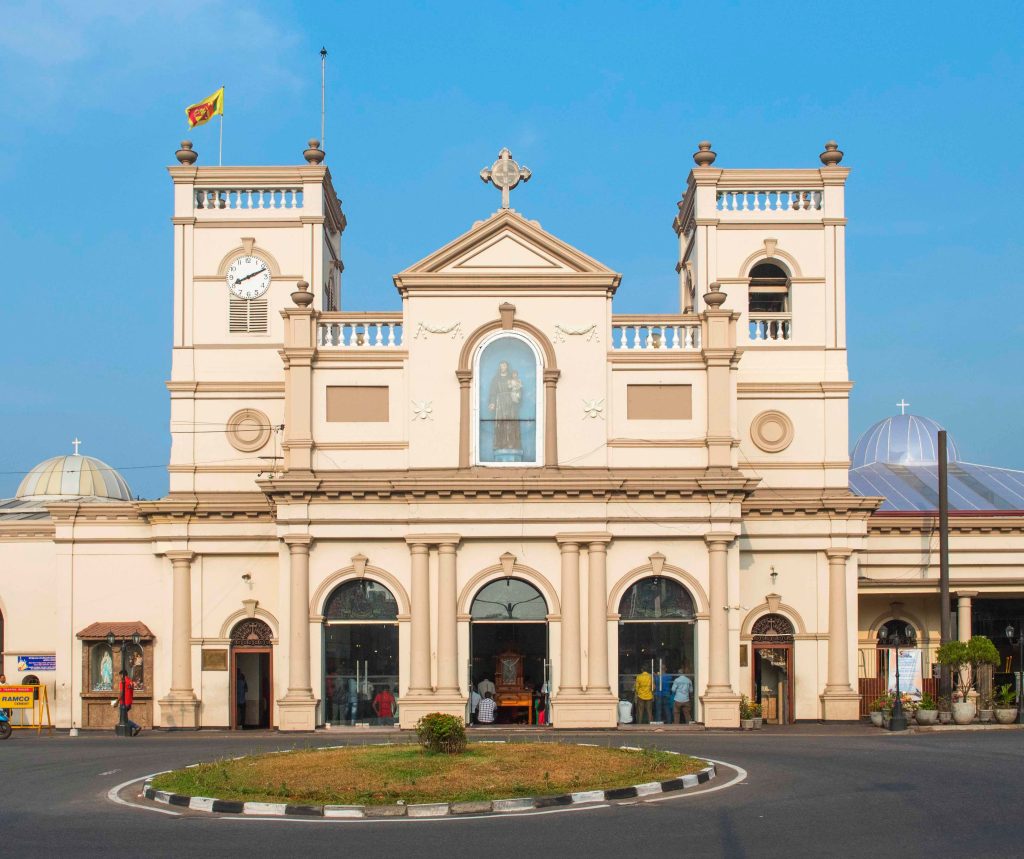
History of St. Anthony’s Shrine Kochchikade
A shrine where many faiths unite…
St. Anthony’s Shrine’s origins relate to the early Dutch colonial period, when Catholicism was banned from the island, with Catholic priests carrying out sermons from hiding places. In the 18th century, the Dutch continued their campaign to destroy the Catholic church and prevented people from giving shelter to priests. Fr. Joseph Vaz arrived on the island from Goa, India, in 1687 disguised as a labourer and ministered to the spiritual needs of the people in Jaffna, Puttalam, and Kandy.
Soon after, Fr. Antonio Kochchiyar, also crossed over from India to minister to the Catholics in the city. Disguised as a local fishmonger, he sought shelter in a house on Maliban Street, Colombo, close to St. Philip Neris Church. However, when the Dutch got wind of Fr. Antonio’s whereabouts and dispatched soldiers to arrest him, he fled towards Mutwal, being stopped by some fishermen who were fearful about sea erosion. They made him a promise. If he could get God to intervene and stop nature from taking its course, they would protect him.
According to local legends, the community sought his help to stop the sea from eroding their village. The people of the area turned to Father Antonio for prayer against the advancing sea waves. He planted a cross and prayed at the beach, resulting in the sea waves receding and a sandbank forming to prevent any other waves coming in. The first miracle took place when the advancing sea waves receded, and in that place was built the first small chapel to honor the priest’s patron saint. The astounded soldiers who witnessed this miracle then hurried to the Dutch Governor, sensing the repercussions of arresting the priest. He instead gifted him a small plot of land in the area.
Fr. Antonio worked in disguise by running a grocery store during the day where he supplied meals to the poor, which became a place for worship at dusk. The people called it “Kochchiyar’s Kade” (meaning Kochchiyar’s shop), which evolved into Kochchikade. It is also said that, as he was from Cochin, India, the place has been referred to as Kochchikade—the boutique of Cochin.
The Dutch authorities then allocated him some land to carry out his sermons, whereupon he built a mud brick chapel dedicated to St. Anthony of Padua (Sant’Antonio da Padova). This little brick chapel was gradually transformed by the priest into a chapel where he was buried when he died. In 1806, the chapel was enlarged, and in 1822, one of the members of the Congregation went to Goa and brought back a statue of St. Anthony. The miraculous statue of St. Anthony now stands where Fr. Antonio planted the cross that stopped the advancing sea from threatening to erode the land. It is one of the most captivating statues, bearing a quaintness and placidity worthy of veneration.
Construction of a new St. Anthony’s Shrine commenced in 1828, and it was consecrated on June 1, 1834. The church was built in the Neoclassical style.[4] In 1938, the church was improved and enlarged, with the addition of a chorister’s gallery, large wings on the side, and a mission house and meeting room behind the main altar. The enlarged church was consecrated on February 16, 1940. The place where Fr. Anthony planted a crucifix is at the site where the present church stands. So, the church was raised from a crucifix to a national shrine while going through tempestuous times.
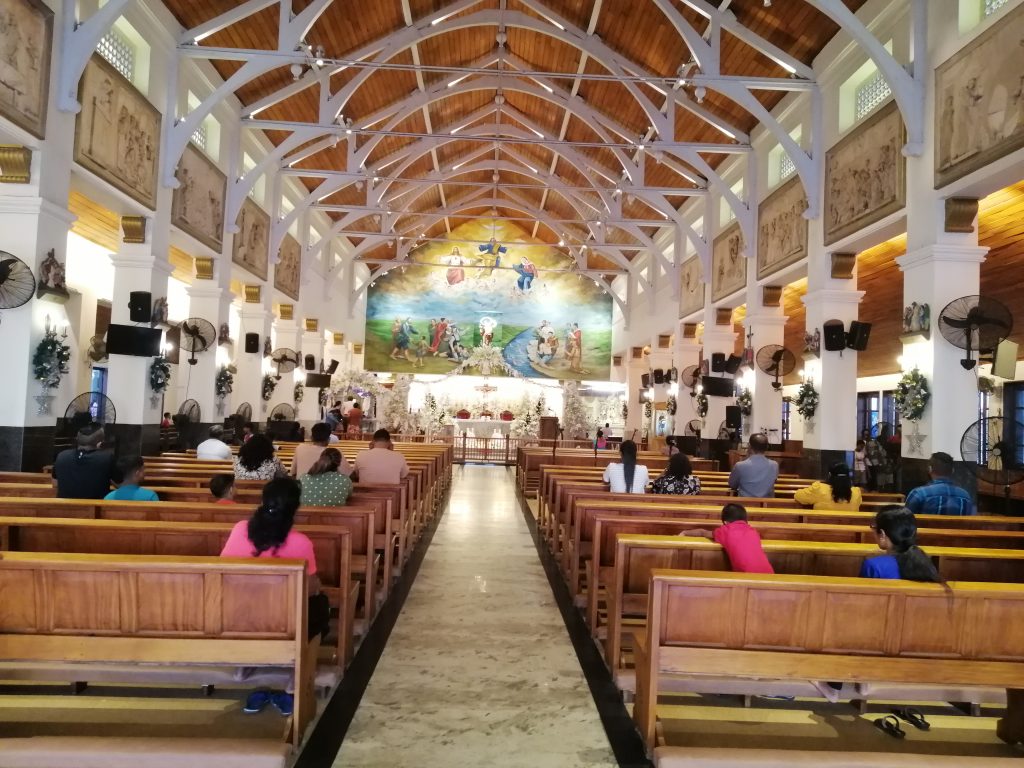
How to reach the St. Anthony’s Church?
The church is located at Kochchikade, Kotahena, Colombo 13, and is dedicated to Saint Anthony of Padua.
St. Anthony’s Church Kochchikade Mass Time
St. Anthony’s Shrine visiting time for devotees is from 5.30 am to 7 pm.
Weekdays
- 6.00 am (Tamil)
- 12.15 pm (Sinhala)
Saturdays
- 6.00 pm (English)
Sundays
- 5.30 am (Sinhala)
- 7.30 am (Tamil)
- 12.15pm (Tamil)
- 5.30 pm (Sinhala)
Contact Information: Tel: +94 112 329 303 for further clarifications
Annual feast of St. Anthony’s Shrine Kochchikade
The annual feast of St Anthony’s Church at Kochchikade, Colombo, is celebrated on June 13. The religious observances are attended by a large crowd of devotees who arrive from many parts of the country. The festival attracts large crowds from both the Christian and Hindu communities, who believe that vows made to the saint have come true. Days’ leading up to the festival, the entire Kochchikade area is decorated with lights and flags barring the saint’s face as well as his colors, brown and yellow.
During the feast, there is a police presence and the navy is instructed to assist with the procession, whereby the statue of St. Anthony is paraded through the streets of Kotahena and Kochchikade. Choirboys and several marching bands precede the statue St. Anthony. Crowds attempt to touch the statue, as they believe ailments may be cured. Other pilgrims gently toss flowers at the statue. Sri Lanka Navy render its assistance for the conduct of this spiritual ceremony, which was participated by a large number of Catholic devotees.
St. Anthony of Padua (born 1195, Lisbon, Portugal—died June 13, 1231, Arcella, Verona, Italy; canonized 1232; feast day June 13)
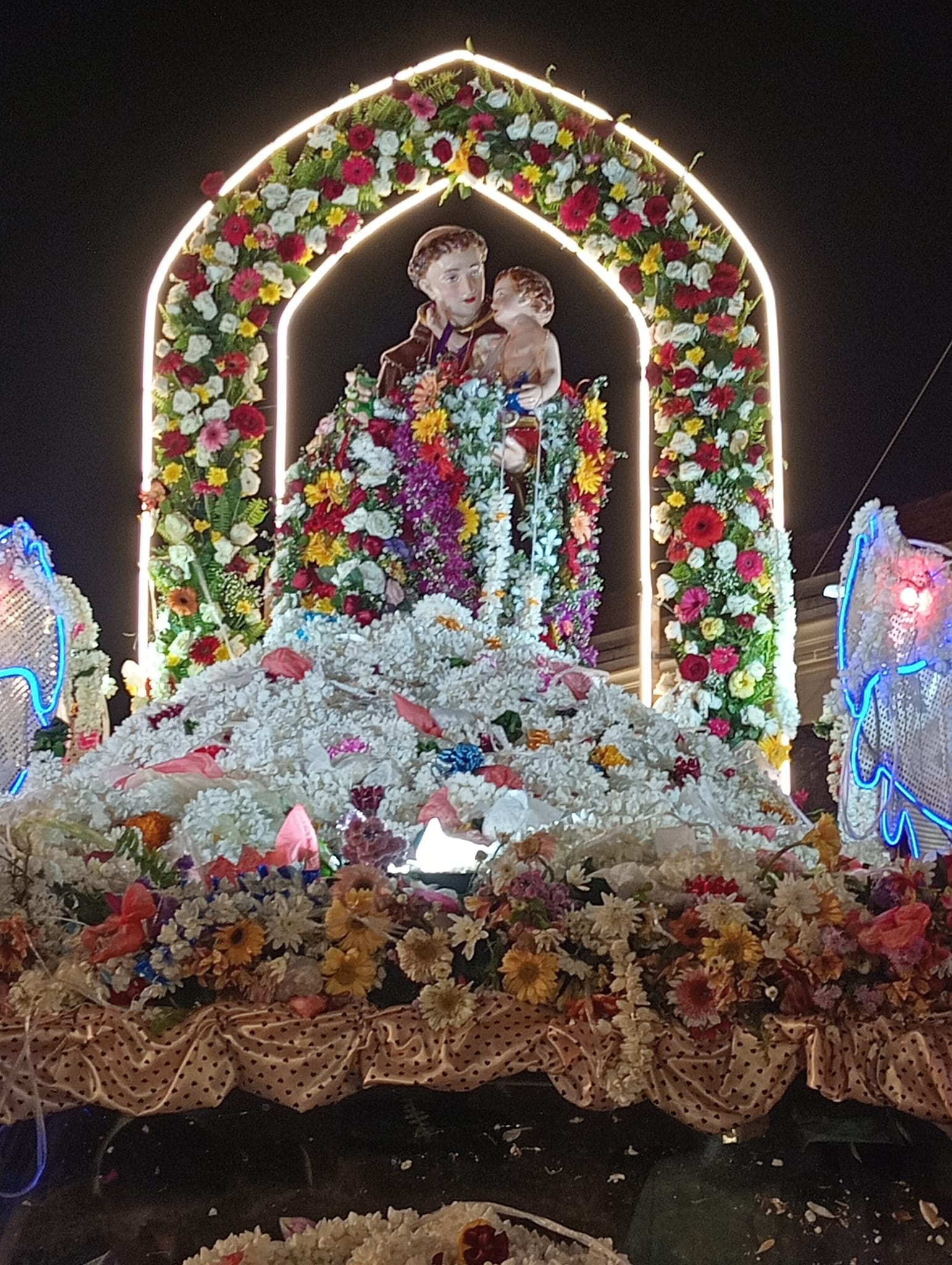
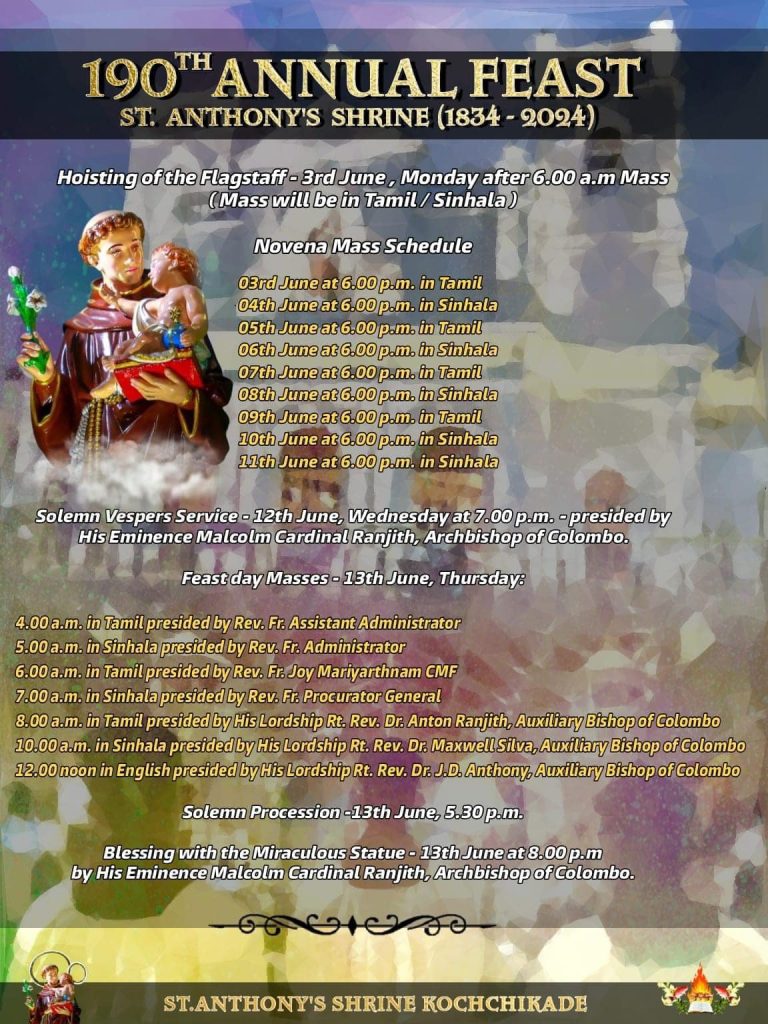
Why is St. Anthony known as the patron saint of lost things?
The reason for invoking St. Anthony’s help in finding lost things is traced back to an incident in his own life. He had a favorite book of Psalms that was very valuable to him. The book was hand-printed, but of even more value were his notes and the comments he had made in the Psalter (the Book of Psalms) to assist with teaching students in the Franciscan order.
It was suspected that a novice who had already grown tired of living religious life and leaving the community had stolen the Psalter. Anthony prayed for the return of his beloved possession. Shortly after, the novice returned the book and sought Anthony’s forgiveness, which was given. For this reason, he is known as the patron saint of lost things. The book is said to be preserved in the Franciscan friary in Bologna today.
Why is St. Anthony holding the Child Jesus?
Next to St. Joseph and the Blessed Virgin Mary, St. Anthony of Padua is the saint who is most often depicted in statues or images holding the Child Jesus. But do we know why he is portrayed this way?
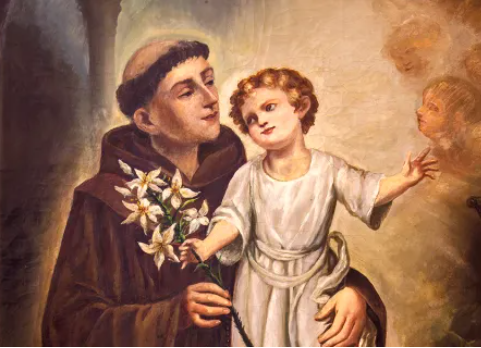
The tradition honors a mystical experience St. Anthony had during his life that was witnessed by a benefactor who gave the Franciscan saint a place to stay for the night. One version of the story is narrated in The Life of St. Anthony, published in 1895.
While traveling through Limoges a pious benefactor gave [St. Anthony] lodging, and … assigned him a room separated from the others. It was night when the owner, either by chance or on purpose, passed near the room of the saint, and he observed that rays of unusual light came through the cracks of the door. He was curious to know the reason of that light, and approached the door very slowly.
He saw Anthony kneeling, as if in ecstasy, and, full of wonder, admiring and caressing a loving child of rare beauty, who was tenderly embracing the saint. Then the man knew, from the affectionate conversation, and from the superhuman beauty, that it was Jesus Christ who, under the appearance of a loving child, was pleased to visit His faithful servant and fill him with His ineffable consolation.
In subsequent depictions of this interaction, the Child Jesus is seen caressing St. Anthony’s face, full of love for the holy Franciscan.
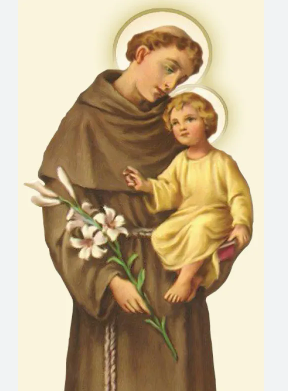
Important Facts: St. Anthony
Saint Anthony of Padua is always pictured holding a lily, a symbol of his purity, and the Christ Child, a symbol of a unique mystical experience Anthony had during his life that was witnessed by a benefactor who gave Anthony a place to stay for the night.
Feastday: June 13
Patron: of Lost Things
Birth: 1195
Death: 1231
Canonized: Pope Gregory IX in 1232
THE STORY OF SAINT ANTHONY (1195 – 1231)
St. Anthony was born in 1195 in Lisbon, Portugal, and given the name Fernando at his baptism. His parents, Martin and Mary Bulhom, belonged to one of the most wealthy families in the city. At the age of 15, Fernando entered the religious order of St. Augustine.
Monastery life was hardly peaceful for the youth, and after two years, at his request, he was sent to Coimbra, a riverfront city in central Portugal. There he began nine years of intense study, learning the Augustinian theology that he would later combine with Franciscan vision.
Young Fernando’s life took a crucial turn when the bodies of the five Franciscan martyrs were returned from Morocco. The Franciscans had been preaching Christ at a mosque and were in danger of being martyred at the outset, but the sultan allowed them to pass on to Morocco, where, after continuing to preach about Christ despite repeated warnings, they were beheaded.
In the presence of a huge crowd, their remains were carried in a solemn procession to the monastery where Fernando lived. While many viewed this incident as tragic and sad, it was deemed glorious and, in fact, was an inspiration to young Fernando. It inspired him to make a momentous decision, that would change his life and the lives of many to come. He decided that he, too, would become a Franciscan!
Fernando shared his thoughts with the Franciscan brothers, saying, “I would gladly put on the habit of your order if you would promise to send me as soon as possible to the land of the Saracens, that I may gain the crown of the Holy Martyrs.” To accomplish this, he asked permission to leave the order of St. Augustine. After some challenges from the Augustinians, he was allowed to leave.
The young Fernando went to the convent of St. Anthony, where he took vows of the Franciscan order and changed his name to Anthony in honor of the patriarch of hermits. True to their promise, the Franciscans allowed Anthony to go to Morocco, to pursue what he felt was his calling to be a witness for Christ and a martyr as well, if God asked.
Anthony then traveled to Morocco to spread God’s truth, While in Morocco, he became seriously ill, and after several months, he realized he had to go home. On the return voyage, unexpectedly, a storm came upon them and drove the ship to the east across the Mediterranean. Eventually, his ship made land on the east coast of Sicily. St. Anthony was greeted and given shelter by the Franciscans of that island.
Anthony was assigned to the hermitage of San Paolo after local friars considered his health. As he recovered, Anthony spent his time praying and studying. At the time, Anthony was only 27 years old when he was first recognized for his great gift of preaching at a gathering for the ordination of Dominicans and Franciscans in 1222. After they finished their meal, the provincial suggested that one of them give a short sermon.
There were no immediate volunteers among the friars, and then the head of the Franciscan hermitage asked Anthony to speak of whatever the Holy Spirit told him to speak of. Anthony resisted the offer at first but finally began to speak in a simple way. The “fire” within him became evident. His knowledge was unmistakable, and the passionate manner in which he spoke truly impressed everyone in attendance.
Soon, news of his hidden gift of eloquence reached Francis of Assisi, and Anthony was assigned to preach in northern Italy. St. Anthony of Padua is one of the most famous disciples of St. Francis of Assisi. Once his talents and knowledge were exposed, his quiet life at the hermitage was exchanged for that of a public preacher.
Anthony traveled tirelessly in both northern Italy and southern France, perhaps making 400 trips, choosing to enter the cities where the heretics were strong. In 1224, Anthony’s superior, St. Francis, wrote to Anthony, asking him to teach his brother Franciscans. Anthony became the first teacher of the Franciscan order to be given special approval and blessings from St. Francis.
In 1226, he was appointed provincial superior of northern Italy. Around Easter in 1228, at the age of 33, he met Pope Gregory IX in Rome. The Pope had been a faithful friend and adviser of St. Francis. Back in Padua in 1231, Anthony preached his last and most famous Lenten sermons.
The crowds were so great, sometimes 30,000, that the churches could not hold them, and the people waited all night to hear him. A bodyguard was needed to protect him from the people armed with scissors who wanted to snip off a piece of his habit as a relic. After his morning mass and sermon, Anthony would hear confessions.
The great energy he had expended during the Lenten season left him exhausted. He went to a little town near Padua to rest and recover, but he soon realized death was coming close,, and he wanted to return to Padua, the city that he loved. The journey in a wagon weakened him so much, however, that he had to stop at Arcella.
When one of them asked Anthony what he was staring at so intently, he answered, “I see my lord!” He died in peace a short time after that. Anthony died on the way back to Padua on June 13, 1231, at the Poor Clare monastery at Arcella (now part of Padua), at the age of 35. He was only 36 years old, and he had been a Franciscan for only 10 years.
The story and tradition of devotion to St. Anthony of Padua began almost immediately upon his death on June 13, 1231. Thousands came to view Anthony’s body and attend his burial. His grave at once became a place of extraordinary devotion and numerous miracles.
The following year, his friend, Pope Gregory IX, moved by the many miracles attributed to him during his life and that occurred at his tomb, declared him a saint. His sanctity was so well-known throughout the Church that he was canonized less than one year after his death.
In 1946, Pope Pius XII officially declared St. Anthony a doctor of the church. Upon exhumation some 336 years after his death, his body was found to be corrupted, yet his tongue was incorrupt, so perfect were the teachings that had been formed upon it. He is typically depicted with a book and the Infant Child Jesus and is commonly referred to today as the “finder of lost articles.”
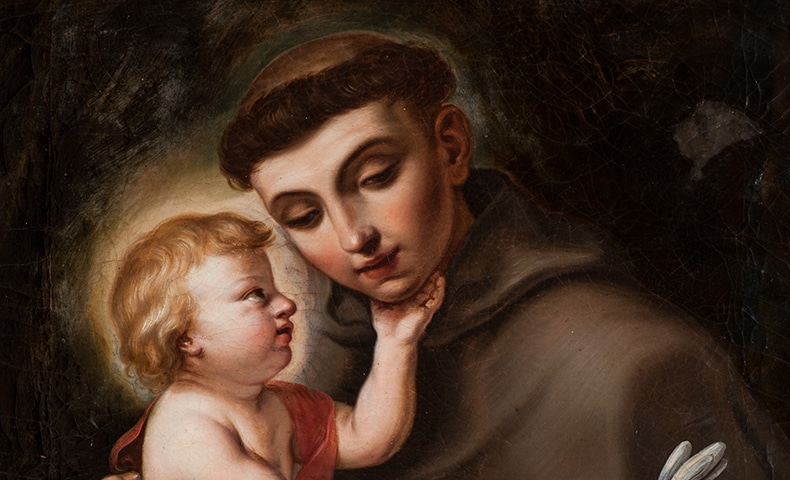
Reference(s): Wikipedia | dailynews.lk | sundaytimes.lk
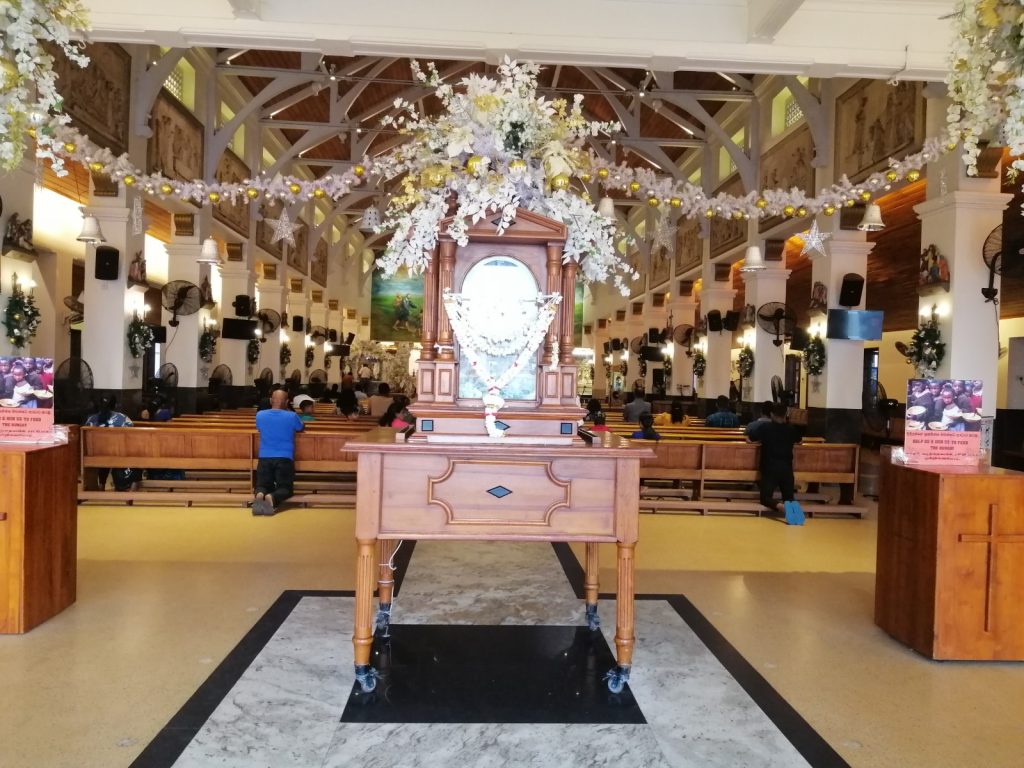

Affiliate Disclosure: As an Amazon Associate, I earn from qualifying purchases. This blog post may contain other affiliate links as well by which I earn commissions at no extra cost to you.

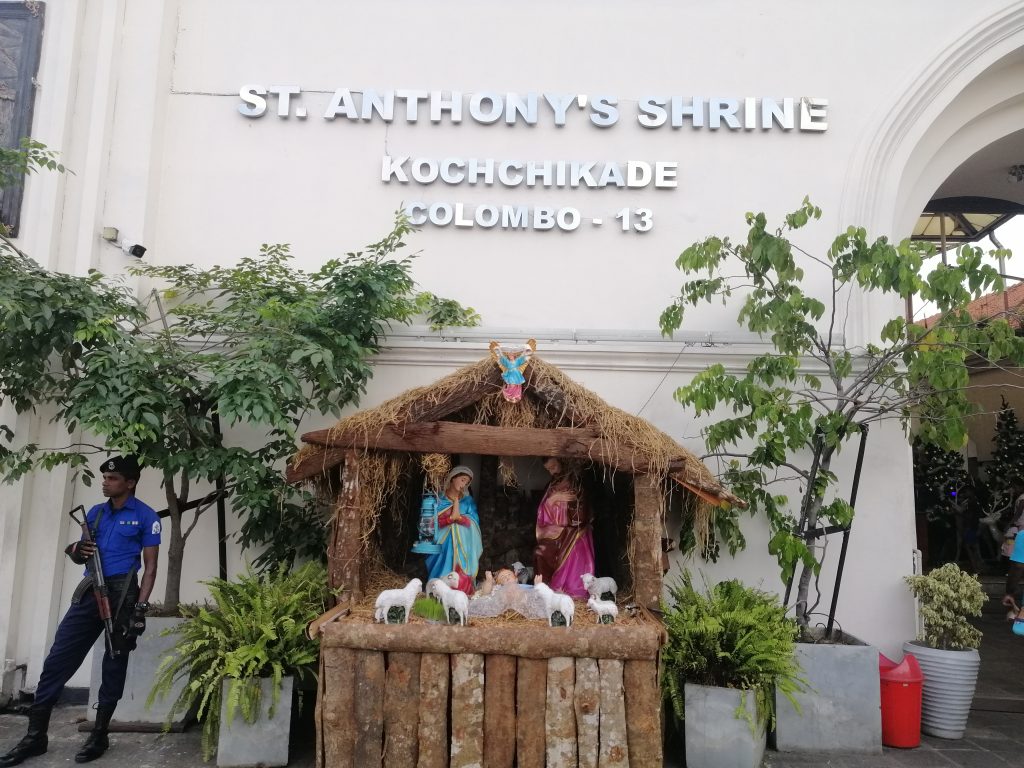
Good response in return of this issue with real arguments and describing everything concerning that.
” Thank you. “
Thank you for sharing your thoughts. I truly appreciate your
efforts and I will be waiting for your next write
ups thank you once again.
” Appreciate your feedback. Happy to hear that “
Hi there would you mind stating which blog platform you’re working with?
I’m going to start my own blog in the near future but I’m having a difficult time
making a decision between BlogEngine/Wordpress/B2evolution and Drupal.
The reason I ask is because your layout seems different then most blogs and I’m looking
for something unique. P.S Sorry for getting off-topic but I had to ask!
” WordPress”
I am actually thankful to the owner of this site who has
shared this wonderful post at here.
” You are most welcome. Appreciate your feedback “
Rattling great information can be found on weblog. “I don’t know what will be used in the next world war, but the 4th will be fought with stones.” by Albert Einstein.